On April 15, the 2nd China Humanoid Robotics and Embodied Intelligence Industry Conference kicked off grandly in Beijing. As one of China’s most authoritative humanoid robotics industry events, the conference gathered industry experts, business leaders, and researchers from around the world to discuss the latest trends in embodied intelligence. Vizum, as a representative company in the domestic humanoid robotics sector, was invited to attend the event and share its cutting-edge insights on humanoid robot technology and applications.
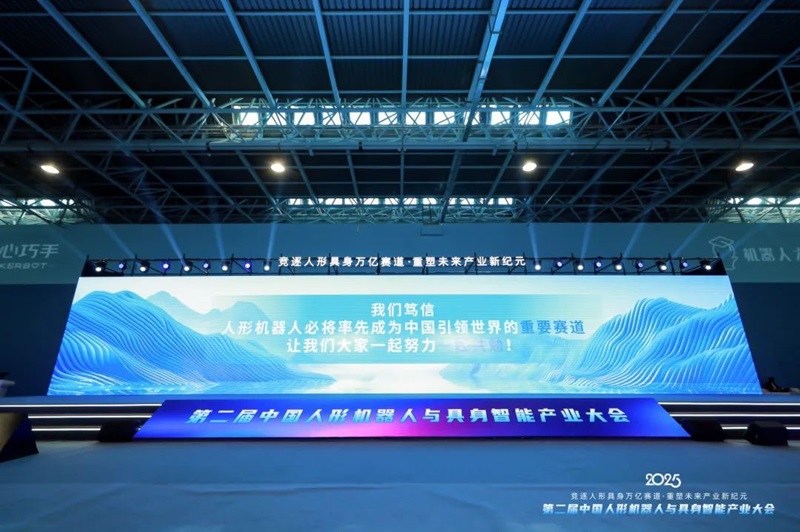
During the opening ceremony, the “2025 Humanoid Robotics and Embodied Intelligence Industry Research Report” was officially released, with Vizum being invited to participate in the launch and the accompanying product unveiling. This authoritative report delves deeply into the technological evolution path, industrial ecosystem layout, and commercialization prospects of the humanoid robotics field, offering valuable professional references to help attending companies grasp industry development trends and market opportunities.
Breaking Technological Barriers and Leading the Frontier
In the main forum, Dr. Xiaojian Dong, CEO of Vizum, delivered a keynote speech titled “Technology Breakthroughs and Product Practices of Vizum’s Humanoid Robots,” focusing on the company’s innovative achievements and technological breakthroughs in humanoid robotics.
Dr. Dong introduced the six core design principles of Vizum’s humanoid robots, elaborating on their human-robot collaboration innovation concept. First, he emphasized multifunctionality, building a complete functional system that supports natural language interaction, environmental perception, and other intelligent features to meet the needs of various industrial and service scenarios. He then highlighted the breakthrough autonomous operation capability, achieving autonomous decision-making and task planning based on the Natural Learning® algorithm, completely eliminating the need for manual remote control.
He also focused on practicality, continuously optimizing the design based on user needs to ensure high performance in real-world applications. Dr. Dong pointed out the cost optimization, creating a highly competitive price structure to lay a solid foundation for mass production and market penetration. He also stressed safety and stability, ensuring safe interaction and information protection. Lastly, he highlighted ease of maintenance, implementing a modular architecture and self-charging technology to significantly reduce maintenance complexity. These principles work in synergy, not only establishing a technological barrier for Vizum’s humanoid robots but also providing a systematic solution for their industrialization.
Dr. Dong also delved deeper into the core technological matrix of Vizum’s humanoid robots, sharing insights across several dimensions: In 3D vision perception, Vizum’s self-developed vision system has broken environmental constraints and, through advanced imaging algorithms, achieved micron-level precision in real-time recognition, providing precise visual guidance for robot movement control. In next-generation dexterous hand design, featuring nine degrees of freedom and 18 joints, the dexterous hand replicates human hand flexibility and, in collaboration with the vision system, can perform intricate tasks like threading needles, showcasing superior hand-eye coordination. In AI cognitive systems, the multi-dimensional integrated system endows the robots with the ability to continuously learn and evolve autonomously, enabling them to comprehend complex tasks and perform intelligent decision-making. The shared brain platform allows rapid adaptation to multiple application scenarios, including industrial handling, precision welding, service reception, intelligent fueling, and other diverse tasks.
Product Launch and High Attention
At the exhibition, Vizum showcased its humanoid robot, which highlighted the company’s technological advantages in the humanoid robotics field. With a highly anthropomorphic structure design, Vizum’s humanoid robots not only adhere to ergonomic principles but also utilize advanced motion control algorithms to achieve lifelike natural movements. Their combination of a futuristic design and practicality perfectly embodies modern industrial aesthetics.
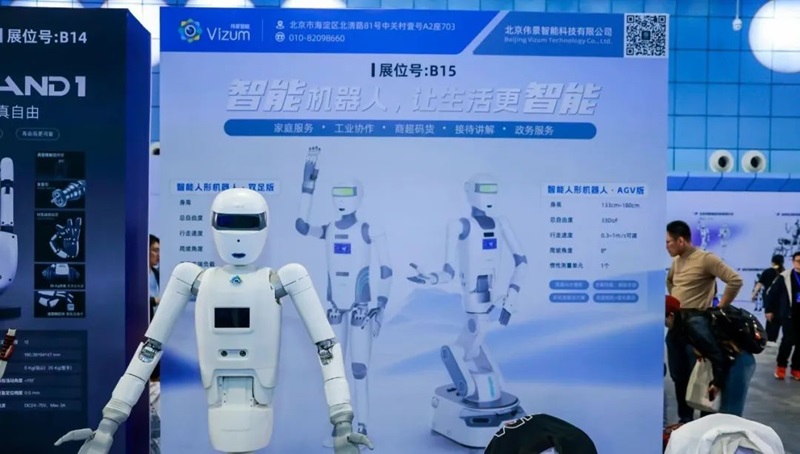
The robots integrate cutting-edge sensor technologies, including high-precision visual recognition, 3D spatial auditory localization, and sensitive tactile feedback, forming a comprehensive environmental perception system that enables them to handle various complex scenarios with ease. Additionally, the robots feature multiple human-machine interaction interfaces, such as natural voice communication and gesture recognition, enhancing operational convenience. Innovative joint design and motion control algorithms give the robots human-like flexibility and precision, allowing them to perform a wide range of delicate tasks.
Honor and Well-Deserved Recognition
At this conference, Vizum was selected for the “2025 Humanoid Robotics and Embodied Intelligence Most Investment-Worthy Enterprises TOP 50” list, a prestigious honor that highlights the industry’s recognition of the company’s technological strength and growth potential. In the subsequent LeadeRobot 2025 Humanoid Robotics Industry Gala, Vizum achieved another milestone, winning the “Humanoid Robot Technology Breakthrough Award” for its groundbreaking technological innovations and outstanding R&D capabilities, standing out among hundreds of competing companies.
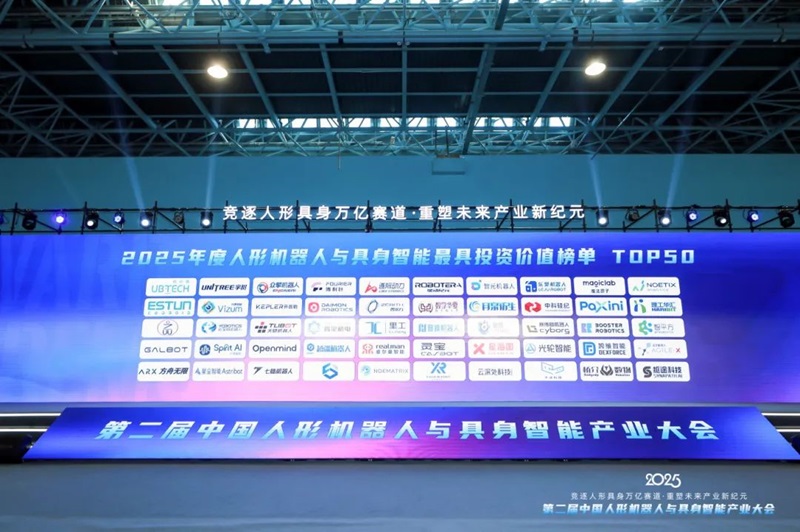
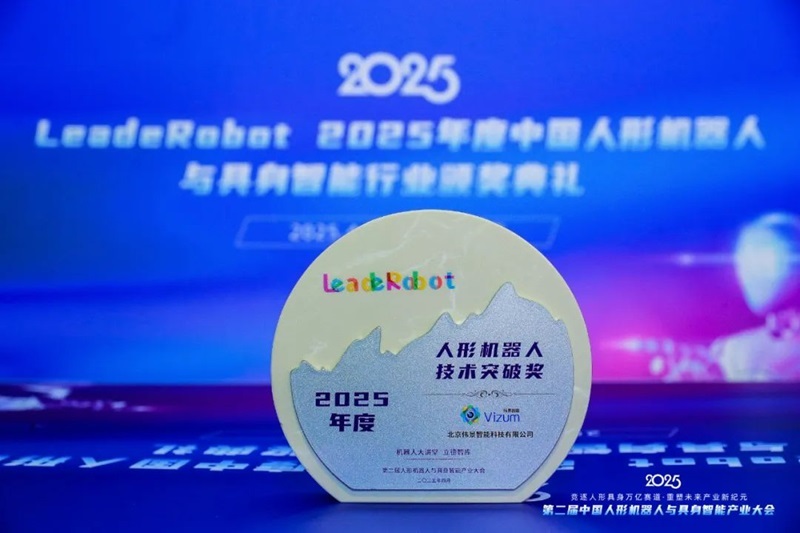
This award will further promote Vizum’s deep positioning in the intelligent robotics field and technological iteration, continuing to lead the development direction of industry technology.
Crafting the Blueprint, Shaping the Future Together
In the dual driving forces of technological iteration and industrial upgrading, humanoid robots are accelerating their penetration into key fields such as commercial services, smart manufacturing, and healthcare. Their technological value and social benefits will be more fully realized.
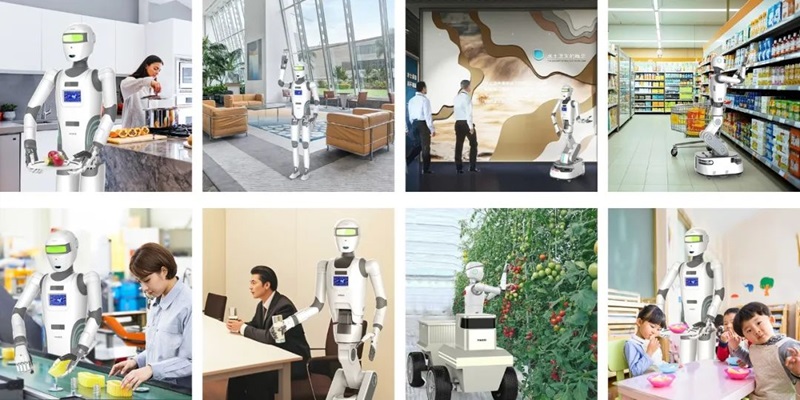
In the future, Vizum will adhere to the innovation-driven development concept, continue to focus on core technological research and development, expand diversified application scenarios, contribute new momentum to the humanoid robot industry ecosystem, and collaborate with industry partners to jointly promote the innovative application and industrialization of humanoid robot technology.
